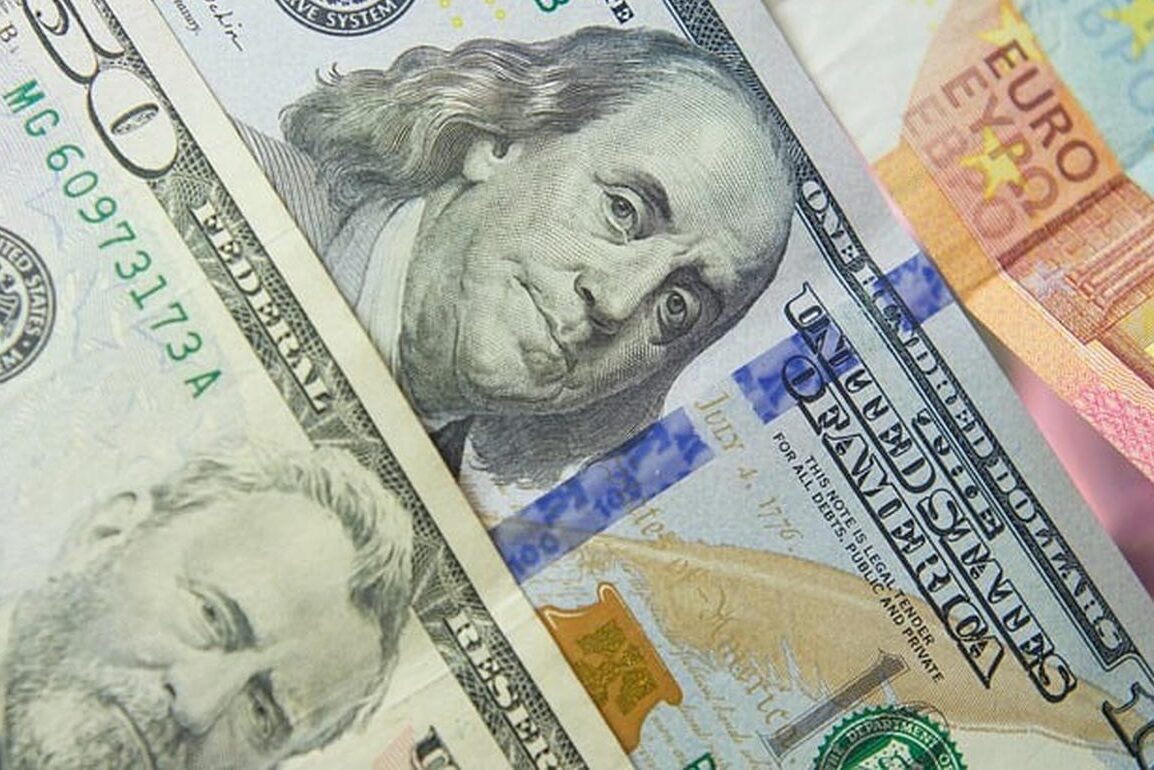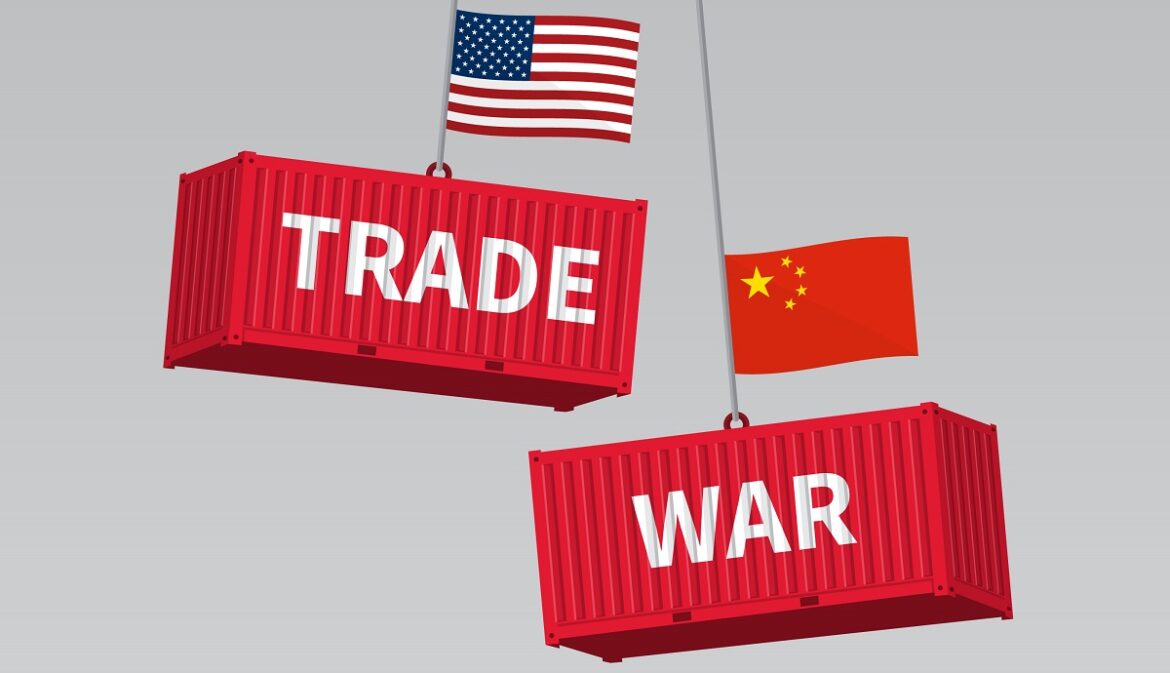Rising U.S.-China trade war tensions set off a selloff in shares, a decline in the U.S. currency, and a continuous run-down in government bonds, spilling into global financial markets this week. While the U.S. Dollar Index (DXY) dropped 1.8% to a six-month low, the S&P 500 sank 3.2% over five sessions—its biggest weekly decline since March. With 10-year Treasury rates skyrocketing to 4.6%, their highest level since 2007, bond markets became increasingly strained. Faced concerns that tit-for–tat tariffs between the world’s biggest economies could derail GDP, rekindle inflation, and prolong central bank hawkishness, investors hurried to rebalance portfolios.
After China declared retaliatory export limits on rare earth materials and lithium-ion batteries, essential components for electric vehicles and renewable energy infrastructure, the selloff got more severe. This came after the United States imposed 25% tariffs on semiconductors and solar panels, affecting $18 billion of Chinese imports. According to analysts, measures risk upsetting supply networks, postponing the green shift, and forcing businesses to pay more. “Markets are pricing in stagflation lite—slower growth with sticky inflation,” said Morgan Stanley strategist Michael Wilson.
Tech Stocks Drop
The selloff landed mostly on American stocks. While the tech-heavy NASDAQ fell 4.1% for the week, its worst performance since December 2022, the Dow Jones Industrial Average lost 900 points (2.5%) on Thursday alone. Dependent on Chinese exports, chip manufacturers fell: Intel dropped 6%, AMD dropped 7%, and Nvidia dropped 8%. The Philadelphia Semiconductor Index (SOX) lost 9%, negating its 2024 gains.
Those heavily exposed to China are cautioned of margin compression. While Apple indicated iPhone production delays resulting from rare earth mineral limitations, Tesla lowered its 2024 delivery projection, citing possible battery shortages. For Q3, S&P 500 earnings revisions went negative as analysts cut profit growth forecasts from 5.2% to 3.1%. “Trade wars are tax increases in disguise,” David Kostin of Goldman Sachs stated. “They first hit margins; growth comes second.”
Dollar Weakens Globally
U.S.-China trade war, the DXY hitting 102.50—a level not seen since November 2023—the U.S. dollar continued to depreciate. Though the Bank of Japan is reluctant to raise rates, the euro climbed 2% to $1.12 and the yen strengthened 1.5% to 153 per dollar. Analysts blame the dollar’s decline on worries about tariffs widening the U.S. trade deficit, delaying rate decreases by the Fed.
The People’s Bank of China (PBOC) intervened with $20 billion in currency sales when China’s yuan dropped 1.2% amid capital outflows. “Dollar weakening isn’t a safe-haven play anymore, said Chris Turner of ING. “It’s a bet that U.S. growth would underperform as protectionism backfires.”
Bond Market Turmoil
Government bonds were under constant sale. The Treasury yield for ten years surged 25 basis points to 4.6%; the yield for thirty years broke 4.8%. European bonds followed suit: UK gilts jumped to 4.4% while Germany’s 10-year Bund yield hit 2.7%. Bonds were dumped in hopes that tariffs would sustain inflationary pressures, maintaining central banks’ hawkish posture.
Fed Chair Jerome Powell emphasized the concern: “Trade policy adds uncertainty to the inflation outlook.” From three expected in April, futures markets now value just one 25-basis-point Fed decrease in 2024. Pimco’s Daniel Ivascyn stated, “Bonds are repricing for a world where trade wars make inflation stickier.”
Commodity Market Divergence
The U.S.-China trade war for energy and industrial metals reflected the upheaval. While lithium carbonate, a vital battery component, sank 12% following China’s export restrictions, copper prices dropped 4% on demand fears. Brent crude climbed 3% to $85/barrel as shipping delays and Middle Eastern tensions offset demand concerns, bucking the trend in oil prices.
Sector performance revealed different risks. While clean energy ETFs (ICLN, TAN) fell 8% due to solar panel tariff concerns, defense equities (Lockheed Martin, Northrop Grumman) rose 5% due to geopolitical anxieties. Due to growing input costs, automotive stocks (Ford, GM) dropped 6%.
Trade War Reignited
The present volatility reflects the trade war between the United States and China, which cut 0.5% off world GDP in 2018-2019. Higher inflation and interest rates today, however, increase hazards. Former U.S. trade representative Robert Lighthizer said, “This isn’t 2018.” Supply chains are more delicate, and inflation is firmly ingrained. Policy errors are rather common.

Tensions could rise with the EU threatening tariffs on Chinese electric vehicles and the proposed “Reciprocal Trade Act” by the U.S. Congress. China’s domestic stimulus initiatives, including $140 billion in infrastructure spending, might not be sufficient if exports slow down.
Conclusion
U.S.-China trade war: Trade-driven uncertainty is perfectly storm-like in the financial markets. Bonds, stocks, and currencies show mounting concern about protectionism’s ability to impede globalisation, complicate inflation battles, and slow GDP. Although short-term benefits from havens like gold and Bitcoin outweigh any other, consistent volatility could discourage investment and cause delays in economic pivots. Diplomatic de-escalation will determine the course ahead. Without supply chain protections or tariff rollbacks, markets risk constant instability. Investors must prepare for a new age in which trade policy, not only central banks, shapes asset values—a reality that calls for flexibility in a fractured world.



